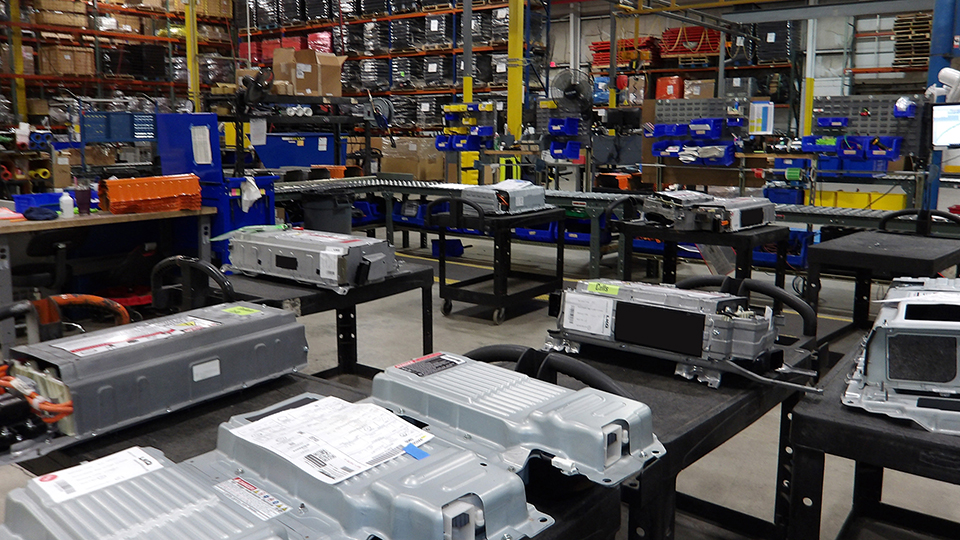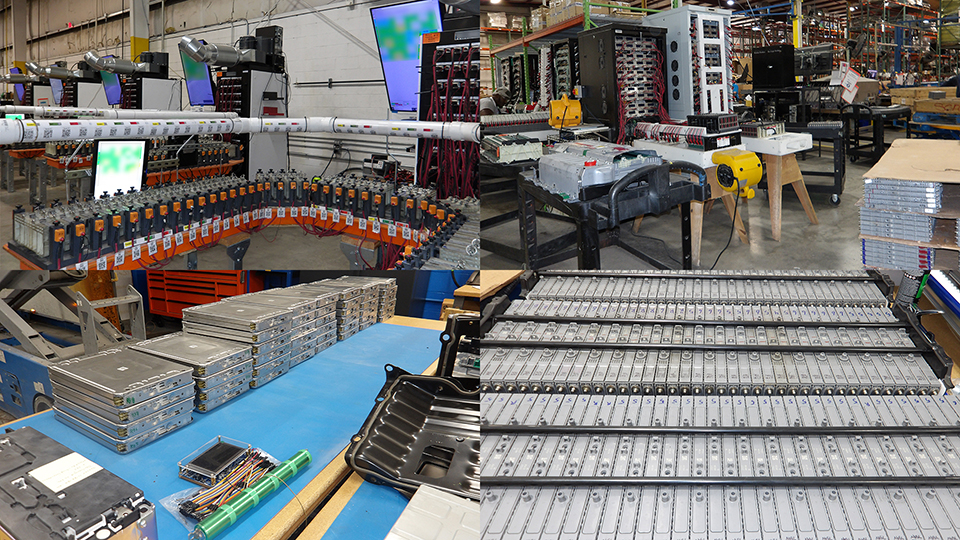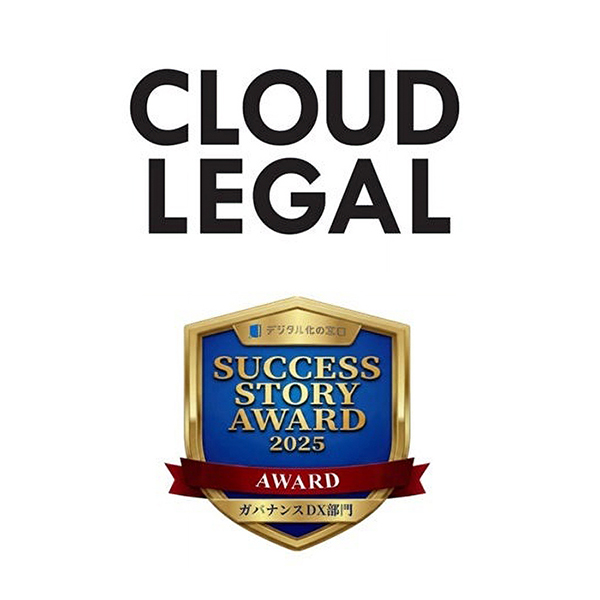Batteries, especially the lithium-ion batteries widely used in electric vehicles (EVs) and other applications, support society with their excellent performance. However, battery performance degrades with use and over time. While this degradation is unavoidable, its inspection and diagnosis have traditionally required expensive, time-consuming processes and specialized equipment.
Prospective Technologies Inc. is upending this conventional industry wisdom by providing software and services that achieve highly accurate battery degradation diagnosis in a short amount of time.
Unlike the conventional industry-standard electrochemical approach, the company employs an electro-mathematical approach focusing on the relationship between charging/discharging behavior and battery degradation. While the estimation accuracy was around 80% at the company's founding in 2024 (which was already superior to existing methods), they have since revamped the algorithm, evolving it to a level of 95% or higher as of 2025.
Masakuni Shibuno, CEO and head of business operations, worked on numerous business development projects at Ricoh before leaving to co-found a consulting firm. While supporting a project for a client, Toyota Systems Corporation, he met Dr. Atsushi Takagi, who was involved in R&D on in-vehicle battery degradation at the company, and Takashi Narui, a system developer with deep knowledge of the automotive and aerospace industries. Together, they co-founded Prospective Technologies. We spoke with Mr. Shibuno about this groundbreaking software and service.
 Mr. Masakuni Shibuno, CEO and Head of Business Operations, Prospective Technologies Inc.
Mr. Masakuni Shibuno, CEO and Head of Business Operations, Prospective Technologies Inc.What inspired you to start the company?
Shibuno: I met my co-founders, Takagi and Narui, while supporting a new business incubation project in the advanced technology development department at Toyota Systems. At the time, Takagi's invention for vehicle battery diagnostics, which he proposed to Toyota North America (2022), was adopted because it cost half as much as Japan's EIS method* and offered superior accuracy. However, it still had technical challenges, such as "being dependent on lab-quality data and sensitive to noise." As Takagi neared retirement, he proposed a carve-out to solve these issues and commercialize the technology, but it was not realized, with the reason being "a lack of precedent."
*EIS (Electrochemical Impedance Spectroscopy) Method: A technology that non-destructively diagnoses a battery's degradation state and lifespan by passing alternating current signals of various frequencies through it and measuring the response (impedance).
So, that's when you decided to start the company.
Shibuno: Yes. We came to believe that the remaining technical challenges absolutely had to be solved and that the service should not be limited to a specific OEM or battery type. We agreed on the direction of providing the service more broadly, and the conversation naturally led to establishing a company.
What kind of technology is it, specifically?
Shibuno: It's a technology that visualizes a battery's performance and value. Battery degradation isn't externally visible, capacity varies by vehicle, and degradation is inevitable. Furthermore, the degree of degradation is unpredictable and varies even if the years of use and mileage are the same. Our goal is to clearly grasp this level of degradation. Our core technology overturns the conventional industry wisdom of the EIS method*. We use a proprietary electro-mathematical approach that focuses on the relationship between charging/discharging behavior and battery degradation, enabling us to estimate battery capacity with over 95% accuracy in just about two minutes.
How do you actually measure it?
Shibuno: To diagnose the battery while it's still in the vehicle, there's a port called "OBD2 (On-Board Diagnostics)" located under the steering wheel in the driver's seat, which provides access to the electronic control system. By connecting a dedicated wired or Bluetooth scanner here, we can connect to the vehicle's network. The various Electronic Control Units (ECUs) within the vehicle send signals to each other via a communication protocol called "CAN (Controller Area Network)" to perform various controls, including charging and discharging. The OBD2 port serves as the interface for reading the signals flowing through this network and acquiring important information, such as driving data and the battery's SOH (State of Health).
Is battery degradation diagnosis only for EVs?
Shibuno: This diagnosis applies not only to EVs but also to HVs (Hybrid Vehicles). In the Japanese market, there are over 13 million HVs on the road, compared to about 500,000 EVs. Therefore, we are using HVs as a foothold for our domestic expansion. However, we see a difference in awareness of battery degradation among HV users. With an HV, even if the traction battery's performance declines, the vehicle can continue to run on its gasoline engine, so there's a tendency "not to worry much about degradation." But battery degradation leads to worse fuel economy and reduced acceleration, and if ignored, it can, in the worst-case scenario, lead directly to the vehicle becoming inoperable. For owners and businesses considering when to replace their vehicle or assessing its resale value as a used car, knowing the exact state of degradation is a crucial factor in determining its asset value.
Can you diagnose any type of battery?
Shibuno: Yes. There are various types, such as nickel-metal hydride and lithium-ion, but our solution is not dependent on the battery type. This is because all batteries involve ions moving between the positive and negative electrodes, no battery is immune to degradation, and our algorithm looks at the patterns of this degradation.
What benefits does this diagnosis provide?
Shibuno: The in-vehicle diagnosis method can be applied to areas such as battery assessment in the aftermarket for rental cars and used car sales, as well as battery screening during vehicle inspections (shaken). In the aftermarket where batteries are diagnosed after being removed from the vehicle, the estimation accuracy of the diagnosis directly impacts customer profitability and productivity, making the benefits of adoption clear. We plan to build a cloud service based on this technology next year. Conventional diagnostic methods required a centralized operation, gathering vehicles at large-scale factories with expensive equipment for measurement. The method we propose enables diagnosis at locations close to battery collection points. This facilitates a decentralized, "local production for local consumption" model, contributing to significant cost reductions and efficient supply chain operations.
Where is it actually being implemented?
Shibuno: Currently, we are in the final stages of solidifying a contract with a major aftermarket company in North America. They will be our first partner (client).
 Inside a battery remanufacturing plant
Inside a battery remanufacturing plantHow do you plan to grow the business in the medium to long term?
Shibuno: We are currently in the phase of establishing concrete success stories with our clients and expanding the business. Our full focus is on this right now. However, our future vision is to build a global platform for "battery health" and "performance management." Our technology transcends borders and is being recognized in green sectors like climate tech, especially overseas. In an age where energy issues are linked to national security, and in a future where vehicle mobility is advancing, we want to make a significant contribution to society with this technology. Specifically, we aim to become the world's first globally recognized Japanese company in the battery industry's software domain.
Are you considering applications outside of vehicles?
Shibuno: While EVs account for the majority of reusable batteries, at about 70%, they are also widely used in other fields. BESS (Battery Energy Storage Systems) accounts for about 15% and is used for large-scale power storage. In transportation and aviation, they're in aircraft, drones, and marine applications. In space, they are used in environments like space stations where a constant electricity supply is essential, and in the medical field, they are installed in medical devices. For home and personal use, they are in many devices like PCs, smartphones, and electric scooters. As you can see, they are essential to our lives in many areas. Since the EV sector holds the greatest potential for second-life and recycling of batteries, we plan to first promote their use in the EV field.
What kind of talent is your company looking for?
Shibuno: The three co-founding core members each have different areas of expertise, and by complementing each other's knowledge and skills, we have increased our business's probability of success. However, the current team consists entirely of experienced senior Japanese men. We are looking for talent that is younger, highly capable, and possesses integrity, as well as the passion to tackle hard work. We do not discriminate based on race, nationality, religion, or creed in our hiring. Our market is overwhelmingly larger overseas than in Japan, so we want to welcome motivated individuals to our team who can sympathize with our vision and work hard in the global arena.
What was your reason for applying to the Startup League, and what do you expect from it?
Shibuno: The main reason I applied was that I felt a strong affinity between our business and the ICT field. Batteries are, in essence, the world of chemistry and physics. However, our battery degradation diagnostic technology runs on an IT system. Therefore, ICT felt familiar and resonated deeply. Now that we've been selected and are participating, I find the mentors' feedback to be extremely interesting, constructive, and a great learning experience. The world of batteries can be seen as "plain and sober" or "niche and narrow," and it might be a domain that general consumers don't often think about. However, I am truly grateful that this league understood the significant impact it has on society behind the scenes. It's not just business support; the league's system, where participants can elevate each other, is also excellent.
Finally, please tell us about your future aspirations.
Shibuno: It is no exaggeration to say that almost all the challenges facing EVs are battery problems. Even as performance improves, a vehicle's lifespan and its battery's lifespan do not necessarily align; in many cases, the battery degrades first. Even if a revolutionary "super battery" were developed, the phenomenon of degradation itself is unavoidable. Given this inevitable degradation, a technology that can accurately assess performance throughout the battery's lifecycle is essential to extract its true value. Without this, we cannot properly judge the residual value after removal from the vehicle, leading to an imbalance from a societal perspective. Large-capacity, second-life batteries whose soundness is guaranteed by accurate diagnostic technology have greatly expanded applications. Their role is particularly important in fields like BESS (Battery Energy Storage Systems) and UPS (Uninterruptible Power Supplies). Renewable energy depends on natural conditions like sunlight and wind, which inevitably creates a supply-demand imbalance. By utilizing second-life batteries recovered from EVs, we want to help absorb this imbalance, create a society that can effectively utilize storage batteries, and, by extension, play a part in realizing a sustainable energy society.
 The various secondary uses of batteries play a part in achieving a sustainable energy society
The various secondary uses of batteries play a part in achieving a sustainable energy societyEditor's Postscript
I was struck once again by the importance of the battery degradation diagnostic technology that Mr. Shibuno and his team are tackling. Their invention, which overturns the industry convention of "high cost, long time, and specialized equipment," may seem plain at first glance, but it is a groundbreaking innovation directly linked to vehicle evaluation and asset value judgment in the aftermarket, and its impact on society is immense.
From their founding principle of "not being limited to specific OEMs or battery types," I sensed a management philosophy that looks beyond mere technical superiority to consider contribution to society as a whole.
Mr. Shibuno's vision of building a global platform for "battery health" and "performance management" is an essential piece in achieving a sustainable energy society. I strongly empathize with their stance of trying to contribute to the future in all fields involving batteries.
■ICT Startup League
This support program was launched in FY2023, originating from the Ministry of Internal Affairs and Communications' "Program for supporting research and development of seeds for creating startups."
The ICT Startup League supports startups through four pillars:
①R&D Funding / Hands-on Support
Up to 20 million JPY in R&D expenses is provided in the form of a subsidy. Additionally, in the hands-on support, the selection committee members involved in choosing the league members continue to stay involved post-selection to promote growth. For companies that a committee member evaluates as "an absolute must-select," a "fan-like" support system is built where the committee member
personally provides continuous support, such as advice on business plans and offering growth opportunities.
②Discovery & Development
We provide opportunities for learning and networking to promote the business growth of league members.
We also work to discover individuals aiming to start businesses, with the goal of expanding the base.
③Competition & Co-creation
It provides a place for positive competition, much like a sports league, with a system where startups learn together, engage in friendly competition, and win the funding they truly need (up to 20 million JPY). We also offer a venue for co-creation, where league members can collaborate and expand their businesses through various opportunities, such as sessions with selection committee members.
④Promotion
We collaborate with media to publicize the initiatives of our league members! By making their businesses known to many people, we aim to expand opportunities for new matching and chances.
■Related Websites
Prospective Technologies Inc.
/
Prospective Technologies Inc. (LEAGUE MEMBER)
/
ICT Startup League

a23s's "Cloud Legal" Case Study Wins "SUCCESS STORY AWARD 2025" in Governance DX Category
For more details on STARTUP LEAGUE's startup support, please see here.